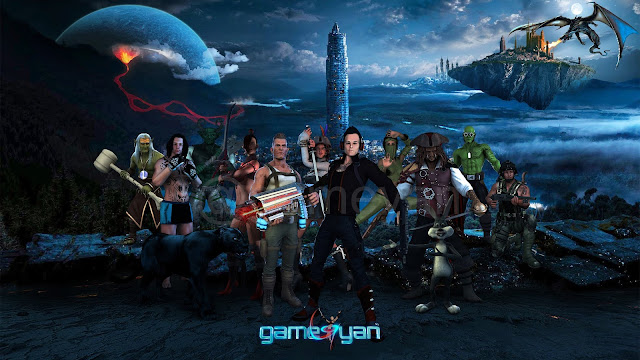Gaming has emerged as one of the most lucrative options to earn money and the two most obvious reasons for this are the evolution and integration of technologies like augmented reality and of course, proliferation of devices. The consistent performance of gaming applications is remarkable. No wonder opportunists of tech industries are turning their heads towards game development. But, while opportunists have lots of reasons to look towards gaming, they have yet more reasons to look towards game art outsourcing.
One cannot overlook the fact that development of an appealing game is not a cakewalk, and if you are thinking of your own set-up, then you better conduct a survey of the amount of investment it requires. Well, if that is not good enough, then why not take a glance at the six principal reasons which consolidate the need of outsourcing in the thriving gaming industry.
1. Cost
It might not cost you an arm and a leg to have an in-house development team that you can call your own. But, if you are not a player of this industry, then putting your money on it can be equivalent to gambling. Outsourcing this task can save money, and at the same time, with a little bit of homework from your side, you can be well assured that this venture is not going to be disastrous.
2. It Works as Catalyst
When people (especially layman) hear the term ‘development’, they get stuck at one word – programming. But, only developers know that this whole process, starting right from conception of ideas to final testing, is actually a Herculean task. There is character designing, scripting, animating, testing and much more. There are companies that do provide outsourcing services for specific tasks.
This acts as catalyst for those opportunists who are in a hurry to watch their game come alive on screen. While you engage your in-house team of experts in animation, you can outsource illustration to a renowned game development company so that your game receives more precision in less time.
3. Time is Money
These three words get implemented in true sense when you go on to hire game art outsourcing companies. Just think about all the time you need to invest in screening and training the candidates to get your work done. On the other hand, when you hire outsourcing services, you get an entire team of skilled professionals on your platter. No hassles of hiring process, no time-consuming training sessions – you save time, you make money.
4. Stay Updated with the Latest Trends
Apart from getting a highly skilled workforce, outsourcing game development task provides you with an added advantage of keeping up with the latest industry trends. While you might not be able to grab the updates, good companies ensure that they use and integrate modern technologies, which means you get state-of-art work and true value of your money.
5. More Resources in Low Budget
Who doesn’t wish to have a little more with little money? With game art outsourcing, this is exactly what you get. Setting up your own team will restrict you to their salaries. You will have to think twice before hiring an extra employee. But, this constraint gets converted into opportunity when you hire outsourcing services. Nowadays, most companies have flexible hiring structures under which you can have more resources within your budget.
The outsourcing trend shows a promising growth and without a doubt, it has immense potential. Though there are few unseen risks in it, its benefits put its risks in the shade. So, you can put aside your fears and give a green signal to that long-awaited ‘gaming application’ dream of yours through game art outsourcing services.


